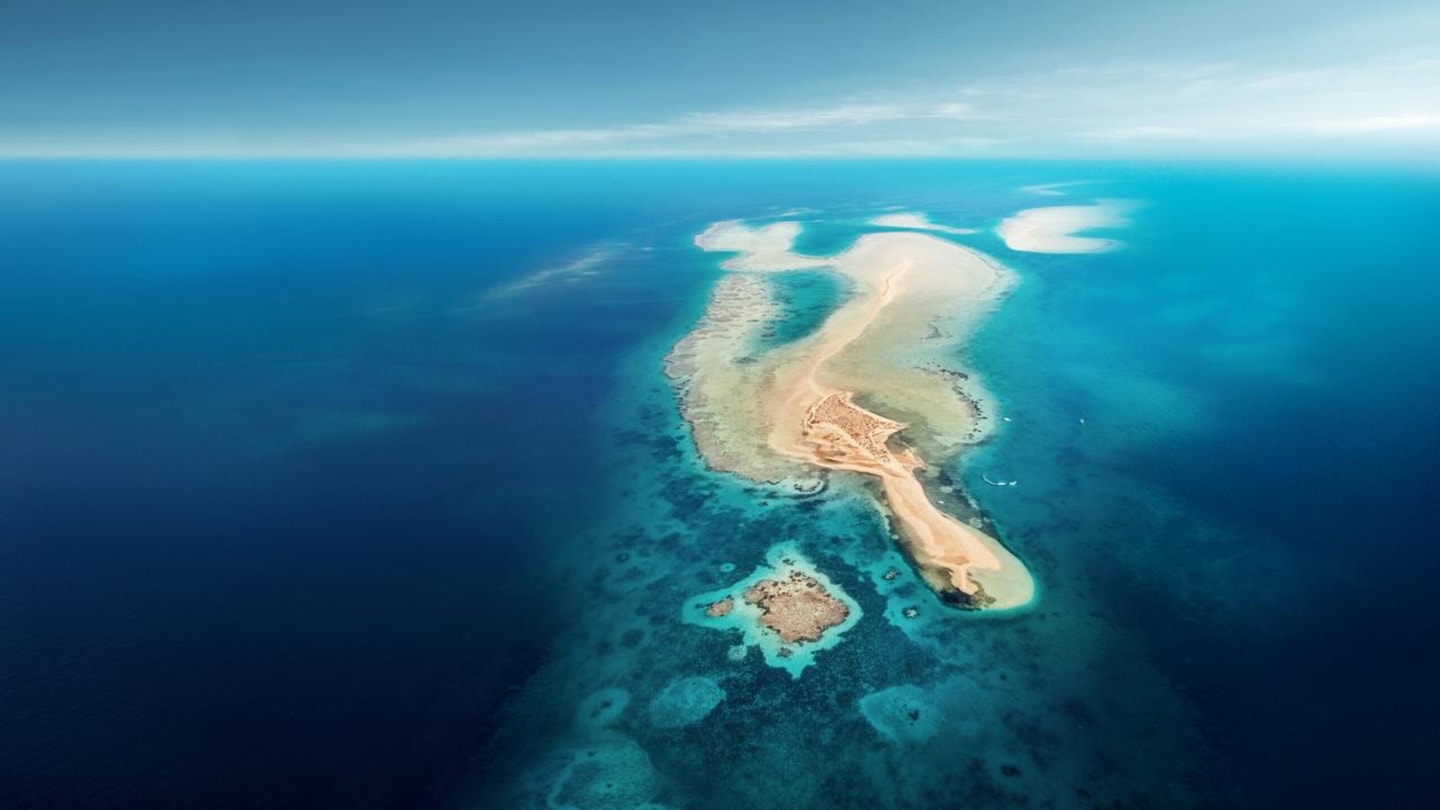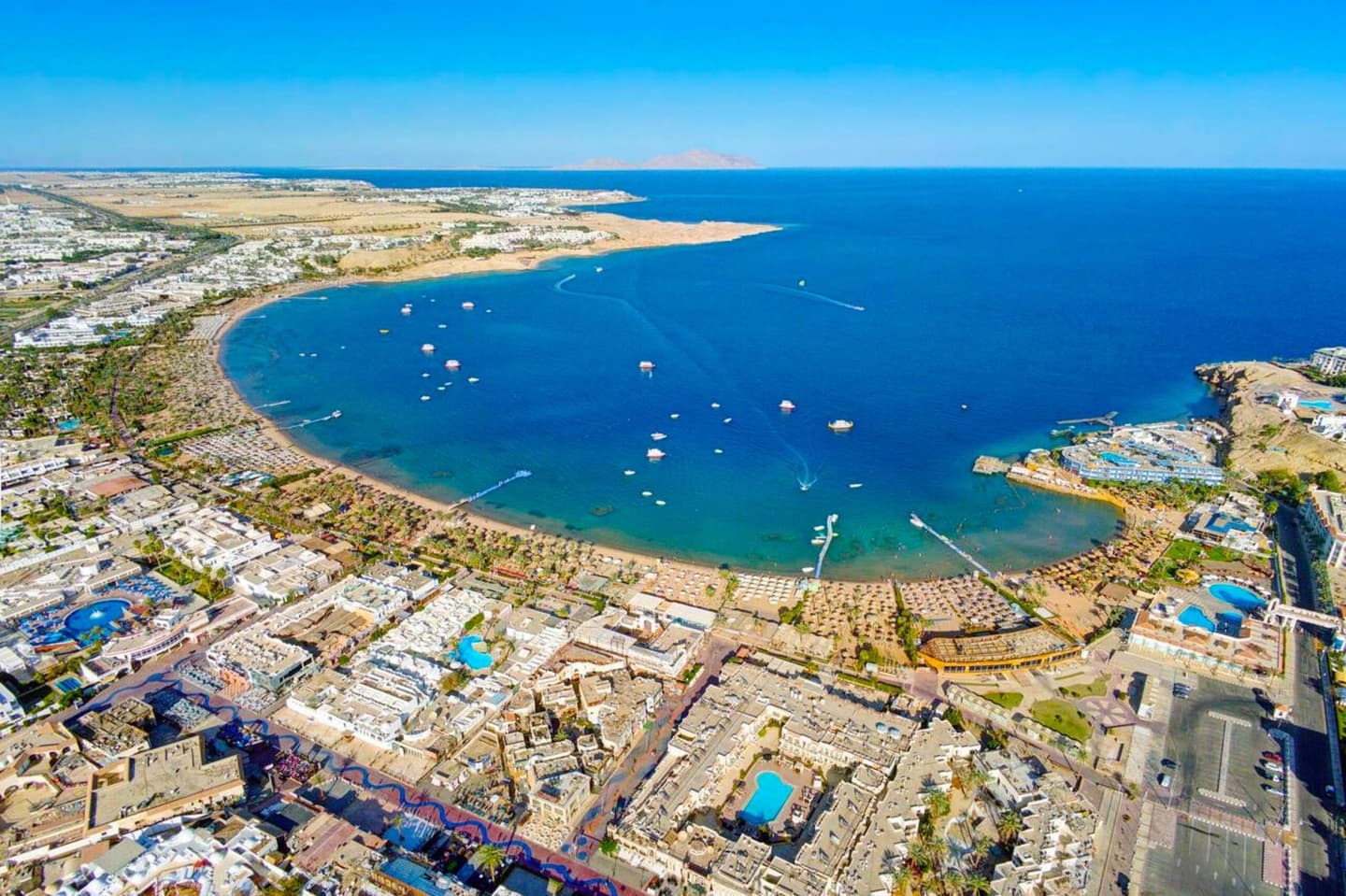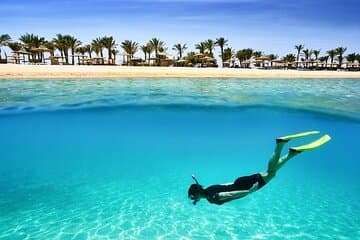
Egypt's underwater paradise: 1,200+ fish species, 220+ coral species, and 17% endemic marine life. Best diving visibility 40m+ in warm waters year-round.
The Red Sea contains 17% endemic species—the highest rate of any tropical sea. UNEP studies confirm it as one of Earth's most biodiverse marine ecosystems.
Top diving destinations along Egypt's Red Sea coast offer world-class underwater experiences, from beginner-friendly coral gardens to advanced drift diving sites.

Calm waters with 30-40m visibility. Beginner-friendly diving conditions with water temperatures 24-28°C. Home to fringing reefs and diverse fish populations including parrotfish, angelfish, and butterflyfish.

Ras Mohammed National Park (est. 1983) protects 480 km² of marine habitat. Features dramatic reef walls, shark encounters, and 40m+ visibility. Water temps 22-29°C.

Pristine reefs with higher megafauna encounters. Spinner dolphins, dugongs, whale sharks (Apr-Jul), and hawksbill turtles. Wadi El Gemal National Park protects 7,450 km² of marine ecosystem.
The Red Sea hosts iconic species found nowhere else on Earth, including endangered marine life requiring urgent protection.
Critically endangered sea cow, fewer than 200 individuals remain
IUCN VulnerableWorld's largest fish, seasonal visitor Apr-Jul
IUCN EndangeredCritical nesting sites along Egyptian coast
IUCN Critically EndangeredGiant reef fish, up to 2m length
IUCN EndangeredEgypt has established multiple marine protected areas covering over 8,000 km² of Red Sea habitat, supporting Egypt Vision 2030 conservation goals.
Established: 1983
Area: 480 km²
Protection: Coral reefs, mangroves
Established: 2003
Area: 7,450 km²
Protection: Dugong habitat, coral reefs
Established: 1992
Area: 600 km²
Protection: Mangrove forests, seagrass beds
Climate change, coral bleaching events (2016, 2017), and overfishing pose ongoing challenges. Egypt's Ministry of Environment works with UNEP and WWF on protection initiatives.
Essential information for planning your Red Sea adventure
1,200+ fish species, 220+ coral species, 17% endemic species rate (IUCN verified)
Oct-Apr: 20-28°C air, 30-45m visibility. Whale sharks: Apr-Jul (southern regions)
Highest endemic species rate (17%) of any tropical sea, 40m+ visibility, 22-30°C water year-round
Dugongs (fewer than 200), hawksbill turtles, whale sharks, Napoleon wrasse (all IUCN-listed)
Ras Mohammed (advanced), Hurghada (beginners), Dahab Blue Hole (technical), Marsa Alam (pelagics)
8,000+ km² protected areas: Ras Mohammed (1983), Wadi El Gemal (2003), Egypt Vision 2030 initiatives
Discover this remarkable marine ecosystem through carefully curated experiences that prioritize conservation and education while showcasing the Red Sea's natural wonders.
All facts and statistics are sourced from authoritative scientific and conservation organizations.
Disclaimer: All statistics and facts presented are based on the most recent available scientific literature and official reports. Marine biodiversity numbers may vary based on ongoing research and species discovery.